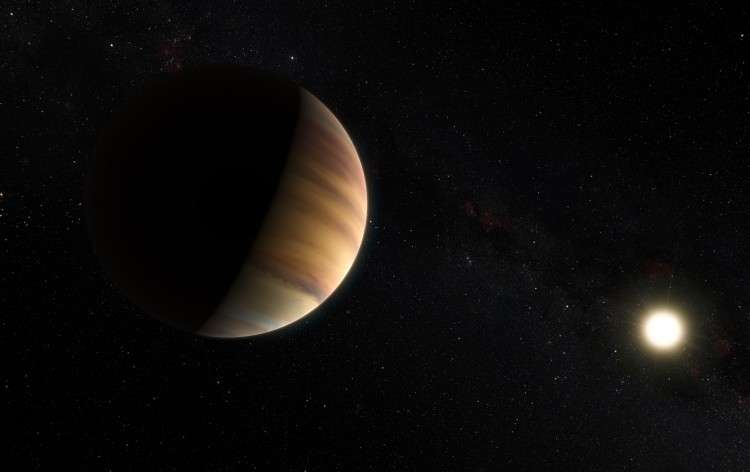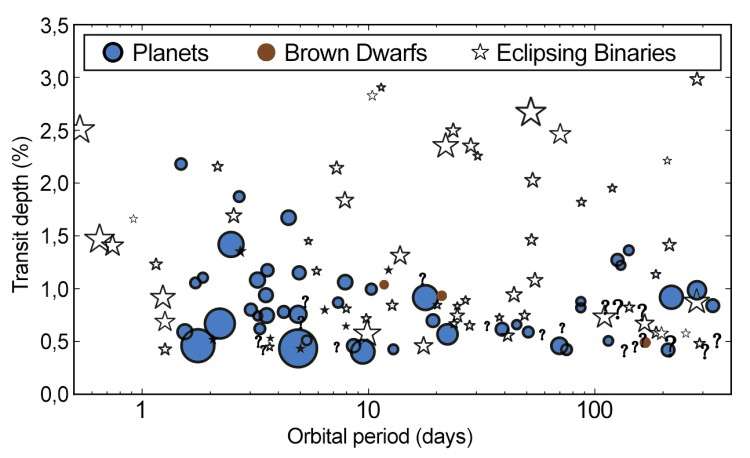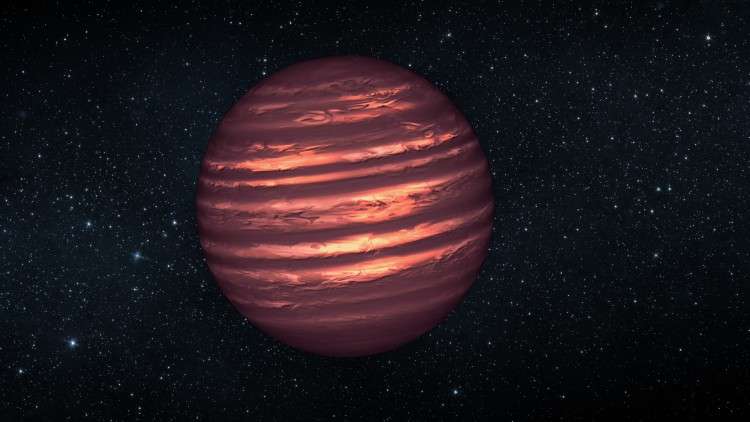Half of Kepler's giant exoplanet candidates are false positives

An international team led by Alexandre Santerne from Instituto de Astrofísica e Ciências do Espaço (IA), made a 5-year radial velocity campaign of Kepler's giant exoplanet candidates, using the SOPHIE spectrograph (Observatory of Haute-Provence, France), and found that 52.3 percent were actually eclipsing binaries, while 2.3 percent were brown dwarfs.
Santerne, first author of this paper commented: "It was thought that the reliability of the Kepler exoplanets detection was very good – between 10 and 20 percent of them were not planets. Our extensive spectroscopic survey of the largest exoplanets discovered by Kepler shows that this percentage is much higher, even above 50 percent. This has strong implications in our understanding of the exoplanet population in the Kepler field."
One of the team members, Vardan Adibekyan added, "Detecting and characterizing planets is usually a very subtle and difficult task. In this work, we showed that even big, easy-to-detect planets are also difficult to deal with. In particular, it was shown that less than half of the detected big transiting planet candidates are actually there. The rest are false positives, due to different kinds of astrophysical light sources or noise."
Giant transiting exoplanets are easily mimicked by false positives, so spectroscopic follow-up observations are needed to establish the planetary nature of the transit detections, and easily reveal blended multiple stellar systems.

Susana Barros, another EXOEarths team member said, "Kepler found a large number of transiting planets down to the size of the Earth. However, radial velocity follow-up of the candidates, which is one of the competencies of IA's Origin and Evolution of Stars and Planets group, is crucial to understanding those planetary systems."
The research, conducted between July 2010 and July 2015, started with all 8826 objects on the list of Kepler objects of interest (KOI). The sample number was progressively reduced to 129 KOIs on 125 target stars, by removing already known false positives, stars too faint to be observed by SOPHIE, and candidates with orbits of more than 400 days, to insure that at least 3 transits could be observed.
Santerne adds, "After 20 years of exploring planets as big as Jupiter around other suns, we still have a lot of open questions. For instance, we don't understand the physical mechanism that forms Jupiter-like planets with orbital periods as little as a few days. It is as if our annual rotation around the Sun would last only a few days— imagine your age! We also don't understand why some of these giant planets are so puffy".
The radius of giant gas planets depends on its atmosphere and interior giant zone, with the irradiation from the star heating its atmosphere, inflating it like a hot air balloon. But the inflation of some giant, highly irradiated planets could not be modeled with reasonable physical processes.

This spectroscopic survey provided mass constraints, which, combined with the radius measured by Kepler transits, allowed the calculation of the bulk density of these giant exoplanets. The team also found a hint of connection between the density of these planets and the metallicity of the host stars, but this needs more confirmation.
The researchers also found that moderately irradiated giant planets are not inflated. Detailed characterization of the internal structure of these planets should shed new light on planet formation and evolution theories.
The results were announced today at the Extreme Solar Systems III conference in Hawaii, celebrating the 20 years of discovery of the first exoplanet around a Sun-like star.
More information: J. H. C. Martins et al. Evidence for a spectroscopic direct detection of reflected light from 51 Pegasi b, Astronomy & Astrophysics (2015). DOI: 10.1051/0004-6361/201425298
Journal information: Astronomy & Astrophysics
Provided by Instituto de Astrofísica e Ciências do Espaço



















